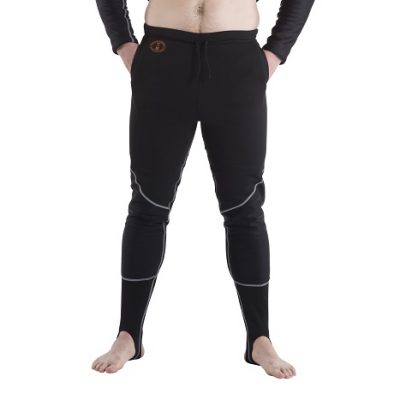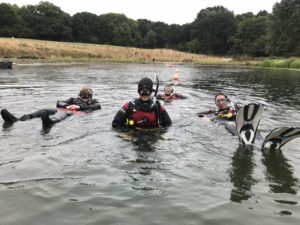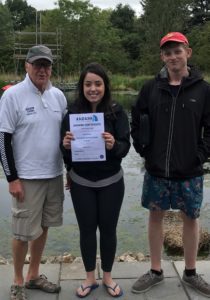I am from Brazil and believe it or not, Scuba Diving is not a popular sport over there. We swim, we snorkel, but that’s it. Of course, some places teach you to dive, but I believe they are still growing, and have a lot of developing to do. To be honest, it never crossed my mind to one day take a course for diving. You know when you are so ignorant about a subject, you don’t have any idea how to start, what to do or that it’s even possible? That was my case.
I did watch many documentaries and TV programmes of activists divers, and biologists going to the middle of the ocean to dive, to see and to study gigantic sharks, rays, whales, and other marine animals. They check their behaviour, how their population are doing, where they go at different times of the year, how global warming is affecting them, and so on.
I’ve also watched movies and TV programmes where people go into a cage to see sharks, but that was never a thing I would do anyway, so I never related to that, and that’s what I thought it was, something that only people who work in the marine field would do.
When I moved to the UK and to Southampton though and started working at Andark, I found out that Scuba Diving was more popular here and pretty much anyone could do it. And then Andy talked about going back to the basics of Scuba Diving on our videos, to educate people like me, that still thinks scuba diving is a distant reality, that you can practice on fancy places, or as a professional. So I had no other thoughts, I had to try it, and of course, I had to do it with my husband so that we could share this amazing experience together.
Now, I want to give you the step by step experience, so you can know what to expect in each phase of the way.
Before the Course – Buying/Booking the Course
First of all, I paid for the course and booked a date for my husband and I, and because I work at the office, I just talked to June. I gave her my personal and card information – something you can do on the website or over the phone – so she could process my payment. We also had to fill out a medical questionnaire to make sure we were fit to dive, if you answer yes to any of the questions, you have to get your doctors approval to let you dive. After I had done this I received my two open water crew packs, one for myself and my husband, both with a Manual, a DVD, a Log Book, and some cards about other specialities and with a code to go online and try a dive computer simulator.
I also received an email with all the details of my course, the dates, what to bring, what I had to do before and during my training and the time that was going to start and finish.
Before the Course – Theory
When I got the manual, I started reading it by myself, but my husband wanted to watch the DVD, so we watched together, and I realised the manual and the DVD have the same information, which I loved because I think it’s much easier to learn.
As we watched the DVD, I must confess I got a little scared. I never knew how serious and technical scuba diving is. Some mistakes you can’t afford to make, lots of equipment you’ve got to remember. So I kept thinking about all the people who love to dive and are passionate about it must be doable and captivating.
After watching all the Chapters and DVDs, we did the Knowledge Reviews, which was great to review what we’ve learned and the things we didn’t fully understand. It also made me more confident and prepared to take the exam on the first day of the course.
PADI OPEN WATER
The PADI Open Water Course is a four-day course, divided into two parts: Referral and Open Water; not counting the studying part. I booked my course for the weekends, so I would take two weekends to finish it. You must know that they are also available during the week, to be done in 4 days in a role, or you can buy just the referral and do the Open Water in a different place. Depending on what you want, you can pick what best fits you.
First Day – Referral Theory
I was so excited that I woke up early in the morning to prepare my bag with everything I knew I had to take. Usually, they start the course by the Theory part, which it was in our case, and because we had a beautiful sunny day, we went to the lake to review everything. It was lovely.
We sat down with our instructor, and we reviewed every exercise. It was great, I asked him the things if they weren’t making sense to me, and he patiently answered everything. After reviewing each Knowledge Review, we took a quiz to practice, and after all, we took the final test, which was a lot like what we had just talked about, so it went smoother than I imagined.
After that, we were supposed to have a lunch break and then start the training in the pool, but my husband had a huge toothache and we had to call it off until he fixed that, which he did in the following week, and we rescheduled the dates.
*There is an admin fee for rescheduling dates.
Drysuit
One day at work, I was telling my colleague Matt, in the shop, that I was taking the Open Water Course and he convinced me to buy the Drysuit Course as well. He said if I were going to dive in the UK, I would probably use a Drysuit, I could do the speciality in the same course, and it was a certification for life. So I thought, you know what, I’m already investing in this course, and I don’t know when I’ll be able to do it again, so I also bought the Drysuit Course to complete them together.
First and Second Day – Referral Pool
On the first day, in the pool, we had a swimming test that made me realise how out of shape I am. It’s a test to make sure we can swim and float, doesn’t mean you need to be a swimmer, but make sure you won’t sink.
After that, we started the real course. A lot like what we’ve watched on the DVDs. Building up the skills to dive safely, I got to experiment what a friend of my had said to me a month earlier. He said paraphrasing, “the PADI Open Water Course (POW) is not like other courses. Most of the courses you go, you leave feeling you didn’t learn much or everything you had to, but in the POW we leave feeling confident we know what to do if something goes wrong”. That’s exactly what I felt right in the beginning, and this is a course that prepares you to deal with a situation if something goes wrong.
In the beginning, was very awkward and wonderful at the same time, because we were doing things we’ve never done before, breathing through a mouthpiece underwater, using lots of equipment, each one for a specific purpose, trying to keep balance, but it was also surprising to see how quickly we evolved.
I loved doing it with my husband and having the same experience together. Laughing at each other when trying to stay still and communicate underwater, helping one another when something was a bit more difficult, and then going back home and talking about everything we felt. We had a lot of fun.
The second day was more straightforward than the first day. Remember when I said about all of this being doable? It is! It seems so complicated when you don’t know anything and what to do, but as you practise, it becomes more and more effortless.
I also need to say that I was so impressed with the instructors we had, Ben and Alex. I thought they were very professional and great teachers.
They explained everything we were going to do on the surface, and then they explained everything again underwater, doing all the signals which it was so lovely, to begin understanding how to talk underwater and being able to see them performing the exercise before we tried. They were also very patient and kind to explain as much as we needed until we understood and got everything right.
We had our last dive with the drysuit, and it felt bizarre, to be honest, But Ben told us that that was normal for the first time because it’s very different from the Wetsuit, but you get used to it, and as more profound, you go, the better it feels.
Third and Fourth Days – Open Water
On our Open Water phase, I felt more confident and relaxed, because I kind of already knew what was going to happen, the people who were taking the course with me and the equipment. We also had terrific instructors with us, Stainton and Tom, once again, very professional and patient, willing to answer any questions and help when needed, and even though the weather changed from sunny to rainy (typically British), I had a fantastic time.
Because we were doing the Drysuit Course with the OW, we’ve only dived with the drysuit at the lake, and I must say that Ben was right. It was so much easier to put on the Drysuit, mainly because we were dry, and it felt way more comfortable. I was so glad we were doing it with the drysuit because it was cold, but to be fair, I don’t know how it was for the people that were doing with their wetsuits.
The Open Water felt more natural than it was in the pool; we repeated everything we were taught in the pool and added some more skills. I think it also felt more like diving because we had more space to swim.
Going from the pool to the training lake was a little daunting for me, I had been told about the visibility in the lake before we arrived at the dive site, obviously it was never going to be as good as the pool. With the limited visibility, at points I almost felt alone but with a quick check to my right I could grab my buddy and then with a quick over my shoulder I could see that our instructor was always right there with us.
Whilst completing my dives, I practiced one of the most important things you need to learn when diving, this was to always remain calm, which I think I did pretty well. A bonus to learning to dive in limited visibility is that if you can dive well in limited visibility, it will certainly make your life a whole lot easier when you get to some exotic locations where the visibility stretches as far as the eye can see.
Another point I’d like to highlight is the lake structure. Up there they have a cafe shop that you can buy food and drinks between the dives. The burgers are delicious and I didn’t even feel guilty about eating it after a dive. They’ve also got big female and male changing room, with toilets and hot water showers, perfect after a cold day in the water.
What can I say? I loved and enjoyed so much my whole experience and all I can say is thank you to all who was part of it. To all the instructors, thank you and congratulations for the great job you’re all doing, for the professionalism and excellence you put on your work. I really admire you all and appreciate what you all do here.
Thank you to all the Andark team who have introduced me to this new world, I always loved to work here, and now I’m also proud.
Now, I can’t wait for the next step. I really want to experience a real dive somewhere here in the UK, probably on a Sunday Dive. I hope you like and find my story helpful, and who knows if someday it’s going to be you?











